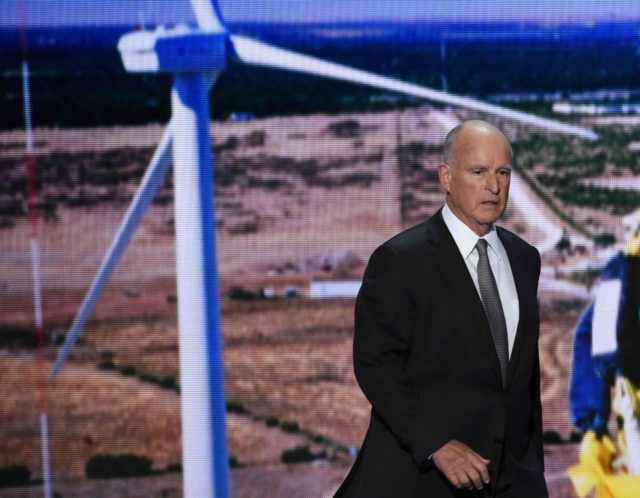Despite already dumping about $20 million of unwanted solar and wind power during fall and spring, when residential and commercial heating and cooling demands are low, California has mandated under law to quadruple sustainable energy production by 2030.
Albert Einstein defined insanity as “Doing the same thing over and over again and expecting different results.” That basically describes the California legislature’s legal mandate for the state’s Independent System Operator (ISO) to force the percentage of electrical production of “sustainable” energy to climb over the next 13 years from 11.9 percent to 50 percent.
The investigative reporters at the Los Angeles Daily News outed the fact that in 2016 the ISO “curtailed” (code word for “dumped”) 305,241 megawatt hours of seasonally excess solar and wind electricity. That is about equal to the annual demand from 45,000 homes.
Just as California began its push to scale up sustainable energy from about 5 percent of the state’s production, the U.S. Energy Information Agency warned in a 2013 major report that although industrial electrical use is fairly steady all year long, residential and commercial “electricity use varies with the weather, as changes in temperature and humidity affect the demand for space heating and cooling.”
The EIA found that the residential sector has the largest amount of seasonal variance, with significant spikes in demand between spring and fall lows and summer and winter highs.
Virtually all homes in California use electrically powered air conditioning as their main source of cooling in the summer. Although most homes use electric resistance heating during the winter, even those that use natural gas or fuel oil still for heating use some electricity to power furnace fans, boiler circulation pumps, and compressors.
Commercial demand exhibits somewhat less seasonal variability in electricity use. But it shows a significant increase in electrical use in the summer and a slight increase in the winter. Compared to the residential sector, a smaller portion of commercial sector energy consumption is devoted to heating, cooling, and ventilation. A major reason for the lower variability in electrical demand by commercial customers is a response to California’s high electrical costs. Most commercial facilities built over the last 30 years tend to save money by using natural gas directly for heating and gas-fired chillers for cooling.
The EIA found that the national low to high variance for electrical demand for summer and winter peaks at about 55 percent higher than spring and fall. But the summer and winter seasonal highs for electrical demand from residential customers varies by about 74 percent, or 67 billion kilowatt hours (kWh); whereas the commercial seasonal low to high electrical demand variances are about 30 percent, or 31 billion kWh.
The Journal for Renewable and Sustainable Energy adds that the seasonal variability of electrical demand is also magnified by what scientists call diurnal variations during each 24-hour day, with 4-hour incremental differences due to cloud cover and wind variations.
Given that these seasonal and daily variable electrical demand patterns directly impact utilities’ costs, the EIA concluded that electrical rates per kilowatt hour should be lowest for industrial customers, higher for commercial customers, and much higher for residential customers.
Compared to the rest of America, California already charges 50 percent higher average electric rates, due mostly to the sustainable power mandates. Golden State industrial customers pay 11.05 cents per kWh; commercial customers pay 13.90 cents per kWh; and residential customers get absolutely hammered at 18.5 cents per kWh.
Breitbart News reported in September that California’s renewable energy grid was on the “verge of crisis” from intermittent nature of the availability of wind and solar power generation.
But with the state demanding the closure of low cost and flexible natural gas power plants to quadruple the percentage of solar and wind power generation, California’s energy crisis will quadruple.

COMMENTS
Please let us know if you're having issues with commenting.